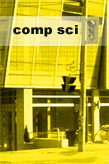 |
Home > Research & Innovations
Research and Innovations
NCART - Network-Centric
Applied Research Team
Network-Centric Applied Research Team (N-CART) is a multidisciplinary
research organization based in the department of computer science
at Ryerson University. Our focus is on the extension of personal
space and a sense of presence into, and across, different media.
We want to interact with real worlds at the other end of the
wire. Our research interests include:
- Autonomy and Autonomous Agents
- Teleoperation and Telepresence
- Computer Mediated Interaction
- Internet Appliances and Soft Computing
- Intelligent Image and Video Processing
- Urban Search and Rescue (Canine and Rescue Robots)
Our organization actively seeks collaboration with educational,
corporate and industrial organizations. We work with systems
that are inherently unreliable, involve insufficient computing
and network resources, are difficult to control and are designed
for the real world. |
Current Research:
Canine
Augmentation Technology (CAT)
Urban
Search and Rescue Robots (USARR)
|
Distributed Applications and Broadband NEtworks Laboratory
(DABNEL)
The Distributed Applications and Broadband NEtworks Laboratory (DABNEL) is a multidisciplinary research group based in the Department of computer science at Ryerson University. Our focus is on defining and implementing algorithms and software development frameworks for telecommunication networks, Computer communication networks, and Mobile communication systems, and and in the protection of these systems.
Our recent and current research activities include the following:
- Distributed Systems Security: Development of proactive techniques for intrusion detection based on Artificial Intelligence and statistical techniques.
- Collaborative attacks and defense in Wireless Mobile Ad Hoc Networks
- Telecommunication network design, control, and management
- Computational intelligence applications in telecommunications
- Mobile Wireless Networks
- Pervasive Computing & Networking
- Wireless Sensor Networks
- Wireless Mesh Networks
- Opportunistic Networks
- Delay Tolerant Networks
|
Mobile Match Maker - Bluetooth Mobile Embedded
Software
Using Java's JSR82 to create an AdHoc connectivity between
JCVMs through Bluetooth discovery layer.
- Won 7th place in top 100 new ideas at the New Ideas Show
|
| Learn more about
Mobile Match Maker |
Artificial Intelligence: Knowledge Representation and Reasoning
Dr. Mikhail Soutchanski does NSERC supported research in the area of reasoning about actions and events. This includes developing modular and taxonomic representations that can facilitate implementing large-scale logical theories for reasoning about effects of actions/events. He is also interested in applications of this research to natural sciences including computational biology and chemistry.
Publications
by Dr. Soutchanksi
|
Interactive Visual Exploration, Manipulation, and Analysis of 2D and 3D Data
Professor Tim McInerney explores and develops interactive visualization techniques for different types of data, such as 3D medical data, 2D images, and CAD meshes. He combines state-of-the-art 3D computer graphics algorithms, human-computer interaction models, and new input devices in novel ways to create new tools and systems for end-users. Below is a link to a more detailed description of Dr. McInerney's research as well as his publications.
Research and Publications of Dr. McInerney
|
Academic History Program
The Academic History Program, developed by a student,
Zhiyun Hu, under the supervision of Dr. Eric Harley, is a tool that
allows students to see their degree progress in the Bachelor of Science
(Computer Science) at Ryerson University. It uses your academic history
file to outline completed and incomplete credits, courses that you
are currently taking, courses you are eligible to take and those
for which you lack prerequisites. The program allows you to plan
your courses, semester by semester, which changing colors to flag
eligible and ineligible courses.
The Academic
History Program and it's user manual can be found at Dr. Eric
Harely's website.
|
|
















